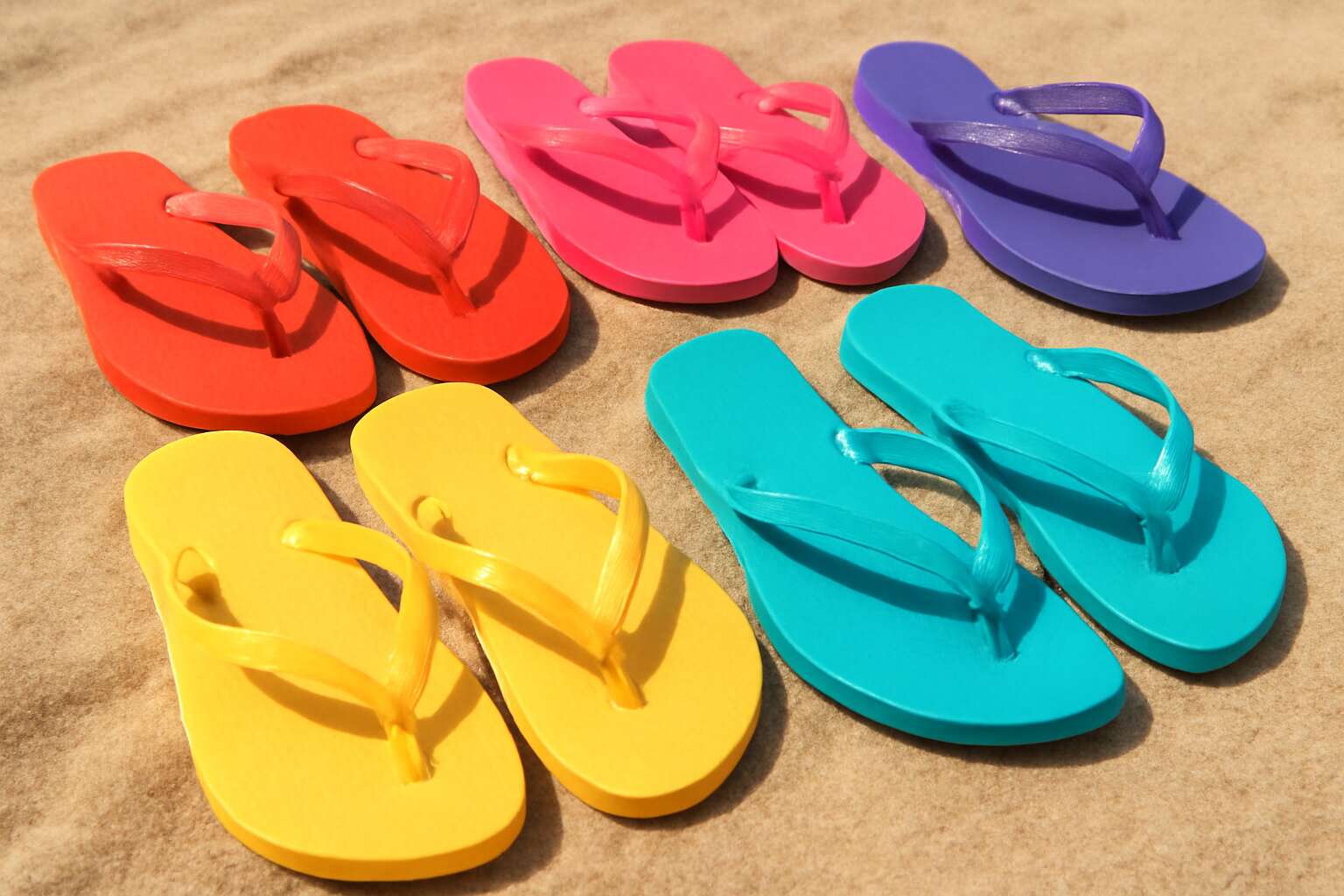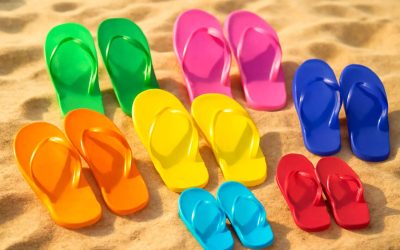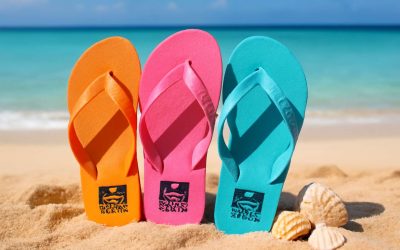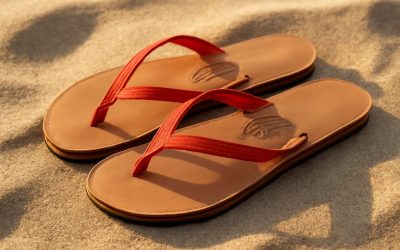Understanding Flip Flops and Thongs
Definition of Flip Flops – What are flip flops? Key features and design elements
Imagine strolling along the sun-kissed beaches of South Africa, feeling the warm sand between your toes—your choice of footwear can make all the difference. When it comes to casual comfort, flip flops and thongs often steal the show, yet their distinctions remain a source of curiosity for many. So, what exactly are flip flops? These beloved summer staples are characterized by their flat sole, open-toe design, and a Y-shaped strap that holds the foot securely in place.
Key features of flip flops include lightweight construction, flexible materials like rubber or foam, and a simple yet effective design that allows for quick slip-on wear. Their minimalist style makes them perfect for beach trips, poolside lounging, or casual errands. On the other hand, the term “thong” is frequently used interchangeably with flip flops, but in some regions, it specifically refers to footwear with a thinner, more delicate strap that often resembles a string or narrow strip of material. The debate of flip flops vs thongs continues to intrigue footwear enthusiasts, especially when considering factors such as durability and style variations.
Definition of Thongs – What are thongs? Key features and design elements
While flip flops and thongs are often lumped together in casual conversation, their differences reveal a fascinating evolution rooted in style and function. Thongs, specifically, have a distinct design that sets them apart from traditional flip flops. They typically feature a narrower, more delicate strap that runs between the toes, crafted from materials like thin rubber, leather, or synthetic fibers. This design lends an air of elegance and minimalism, making them popular choices for both beachwear and more refined settings.
Interestingly, the term “thong” encompasses a variety of footwear styles, but in the context of flip flops vs thongs, the focus is on their subtle yet impactful design distinctions. Thongs often appeal to those seeking a sleeker, less bulky silhouette, and their construction emphasizes lightweight comfort and discreet aesthetics. They are especially favored in warmer climates like South Africa, where the desire for breathable, minimalist footwear is high. The key features of thongs include a thin strap, a flat sole, and an open toe, but what truly sets them apart is their ability to blend simplicity with sophistication—an attribute that keeps them at the forefront in the flip flops vs thongs debate.
Design and Style Differences
Material and Construction – Common materials used in flip flops and thongs
When comparing flip flops vs thongs, design and style differences stand out immediately. Flip flops tend to have a broader strap across the foot, often featuring colorful patterns or textured soles that appeal to casual wearers. Thongs, on the other hand, usually boast a minimalist, sleek look with a narrow strap that fits snugly between the toes. This distinction influences not just aesthetics but also how comfortable they feel for prolonged wear.
Material and construction are equally varied. Flip flops are commonly made with foam, rubber, or EVA for lightweight comfort and durability. Thongs often incorporate leather, synthetic fibers, or rubber, especially in the sole and strap, to provide a more refined or sporty appearance. The choice of materials impacts the longevity and suitability for different environments. For example, rubber flip flops excel on the beach, while leather thongs are popular for casual outings or even semi-formal settings.
Understanding the materials used can help you decide between flip flops vs thongs based on comfort, style, and durability. Whether you prefer the laid-back vibe of flip flops or the streamlined look of thongs, the material quality plays a pivotal role in your overall footwear experience.
Strap Placement and Style – Differences in strap design and placement
When examining flip flops vs thongs, the stark contrast in strap placement and style reveals much about their purpose and appeal. Flip flops typically feature a broad, often colorful strap that spans across the top of the foot, providing a relaxed, casual vibe. This design invites comfort and ease, making them perfect for lounging or quick errands. Thongs, however, adopt a minimalist approach with a narrow strap that sits snugly between the toes, emphasizing simplicity and sleekness. The difference in strap design isn’t just cosmetic; it influences how each footwear type interacts with the wearer’s foot and the environments they’re suited for.
In terms of style, flip flops often embrace bold patterns and textured soles, reflecting their laid-back South African beach culture. Thongs lean toward a refined or sporty aesthetic, often crafted with leather or synthetic fibers, aligning with a more polished or active look. Interestingly, this variation in strap placement and style ultimately shapes the wearer’s experience—whether it’s the carefree freedom of flip flops or the streamlined elegance of thongs. Such distinctions highlight why understanding the nuances of flip flops vs thongs is essential when choosing footwear that aligns with both your style and comfort needs.
Sole Design and Thickness – Variations in sole comfort and durability
Sole design and thickness are often the unsung heroes in the flip flops vs thongs debate. While flip flops tend to sport a more cushioned, thicker sole, offering a plush underfoot experience, thongs usually opt for a thinner, more streamlined base. This difference isn’t just about comfort—it affects durability and how well each style holds up in South Africa’s diverse terrain. Flip flops, with their generous soles, excel at absorbing shock, making them perfect for long strolls along the beach or lounging by the pool. Thongs, on the other hand, prioritize a sleek profile, which means their soles are often less thick, emphasizing agility and ease of movement.
For those who value durability, flip flops generally come with textured, rugged soles designed for longevity, especially if you’re navigating rocky paths or the occasional rough patch. Meanwhile, thongs focus on lightweight construction, often crafted from leather or synthetic fibers, which can sometimes compromise on durability but shine in style and agility. When pondering flip flops vs thongs, consider how the sole design aligns with your lifestyle—whether you prefer the sturdy comfort of flip flops or the minimalist elegance of thongs.
Functionality and Comfort
Occasions for Wear – Casual, beachwear, everyday use, or specific activities
When it comes to functionality and comfort, flip flops vs thongs each serve their own unique purpose, making them suitable for different occasions. Flip flops tend to be more cushioned and supportive, making them ideal for casual strolls around town or relaxed beach days. Their broader straps and thicker soles provide a bit more stability, which many find essential after a long day on their feet.
Thongs, on the other hand, often boast a minimalist design that offers a lightweight feel—perfect for quick errands or slipping on before heading to the pool. For everyday use, the choice hinges on personal preference and the activity at hand. For instance, a sturdy flip flop might be better for a leisurely walk along the boardwalk, while a sleek thong can effortlessly complement a summer dress during beach outings. Ultimately, understanding the nuances of flip flops vs thongs can help you select footwear that balances comfort with practicality, no matter the occasion.
Comfort Level – Foot support, arch support, and overall comfort
When it comes to choosing between flip flops vs thongs, comfort levels can feel like comparing apples to slightly less supportive apples. Flip flops generally offer more foot support, thanks to their cushioned soles and broader straps that hug your feet with a gentle yet firm embrace. This extra padding translates into less fatigue after a long day wandering along South Africa’s sun-soaked beaches or bustling city streets. Thongs, meanwhile, are often designed with minimalism in mind, providing a lightweight, barely-there feel that’s perfect for quick errands or slipping into the poolside bar without breaking a sweat.
Interestingly, many find that flip flops provide better arch support, reducing the risk of sore heels and plantar fasciitis. Their thicker soles also add a layer of durability and shock absorption, which is crucial for outdoor adventures. Conversely, the sleek, streamlined nature of thongs means they excel in situations where style and ease of wear take precedence over prolonged comfort. Ultimately, whether flip flops vs thongs, each has its own niche—one prioritizing support, the other minimalism—making your choice a matter of personal preference and activity. After all, your feet deserve a proper partner for every occasion, from relaxed beach days to city jaunts.
Durability and Wearability – How each type performs over time
In the realm of footwear that seamlessly marries casual charm with functional resilience, the debate of flip flops vs thongs continues to captivate enthusiasts and skeptics alike. Beyond their superficial simplicity, these open-toe wonders reveal divergent trajectories in durability, wearability, and long-term performance. Flip flops, with their cushioned soles and robust construction, tend to age gracefully, often developing a character of their own as they conform to the contours of your foot over time. Their sturdy build resists the daily grind, making them a reliable companion for extended wear on South Africa’s sun-drenched coastlines or rugged urban terrains.
Meanwhile, thongs—crafted with sleek minimalism—often prioritize lightweight comfort and quick-drying properties. Yet, their delicate design can be a double-edged sword. The thin straps, while stylish, are prone to wear and tear, especially when subjected to frequent use or exposure to water and sand. The soles of thongs may show signs of fatigue sooner, losing their supportive integrity after consistent outdoor adventures or long days of walking. For those seeking longevity, flip flops generally outperform thongs, offering a more resilient, dependable option for diverse occasions. Their inherent durability not only extends their lifespan but also ensures that each step remains steady and supportive, even as the miles accumulate.
Ultimately, understanding how each performs over time—whether in terms of wearability or durability—can influence your choice, especially when considering the unpredictable South African climate and active lifestyle. Flip flops vs thongs, each has its unique endurance profile, shaping the way we experience comfort and style in our daily routines and weekend escapes alike.
Cultural Perceptions and Usage
Regional Popularity – Differences around the world in terminology and usage
Across the vibrant tapestry of global culture, the terminology and usage of flip flops versus thongs evoke a fascinating kaleidoscope of perceptions. In South Africa, for instance, the term “flip flops” is often preferred, conjuring images of laid-back beach strolls and carefree summer days. Conversely, in Australian and New Zealand vernacular, “thongs” reign supreme, their name echoing the minimalist elegance of their design. This linguistic divergence reflects deeper cultural attitudes—where flip flops symbolize casual comfort, and thongs are embraced as versatile footwear for both beach and street.
Interestingly, regional popularity also influences how these footwear are perceived and worn. In warmer climates, both are cherished staples, yet their usage varies. Some locales see flip flops as strictly leisurewear, while in others, thongs have seamlessly integrated into everyday attire. It’s a dance of dialect and custom, where the line between casual and chic blurs. Whether called flip flops or thongs, their role in regional fashion narratives remains an enduring testament to the universal desire for comfort and ease.
Fashion and Trends – How flip flops and thongs are perceived in fashion
In the realm of casual footwear, perceptions of flip flops vs thongs are deeply intertwined with cultural identity and personal expression. To many in South Africa, flip flops symbolize the epitome of leisure—simple, comfortable, and unpretentious. They evoke memories of beach days and laid-back afternoons, serving as a universal symbol of relaxation. In contrast, thongs are often viewed as more versatile, capable of traversing both sandy shores and bustling urban streets with equal ease. This duality reflects a fascinating societal dichotomy—where comfort meets style, and tradition coexists with modernity.
Fashion trends continue to blur the lines between these two footwear types. Today, flip flops vs thongs are not just about function—they’re statements. High-end brands have infused flip flops with luxe materials and intricate embellishments, elevating them from mere casual wear to fashionable accessories. Meanwhile, thongs have gained popularity in streetwear culture, often featuring bold designs and innovative strap placements that challenge conventional norms. It’s a dance of aesthetics and utility, where the debate between flip flops vs thongs becomes a reflection of evolving human desires for both comfort and self-expression.
Gender and Age Preferences – Target demographics for each style
In South Africa, cultural norms shape how flip flops vs thongs are perceived and worn. Flip flops are often seen as the quintessential symbol of leisure—perfect for beach days, relaxed weekends, and casual outings. They evoke a carefree vibe that resonates with the laid-back coastal lifestyle. Thongs, on the other hand, tend to carry a more versatile reputation, suitable for both casual strolls and urban settings. Their design allows for a seamless transition from sandy shores to city streets, making them a popular choice among diverse demographics.
Gender and age preferences also influence the popularity of each style. Younger audiences, especially teenagers and young adults, gravitate toward thongs with bold colors and innovative strap designs. Meanwhile, older age groups often favor flip flops for their simplicity and comfort. Women generally prefer stylish thongs that can complement both casual and semi-formal outfits, while men tend to choose flip flops for everyday wear. Understanding these preferences helps brands tailor their marketing strategies in the South African market, where flip flops vs thongs continue to reflect societal values and personal expression.
Health and Safety Considerations
Foot Health Impact – Effects on foot posture, support, and potential health issues
When it comes to choosing between flip flops vs thongs, foot health is often an overlooked but critical factor. Wearing the wrong type of footwear can subtly influence foot posture, leading to discomfort and long-term health issues. Flip flops typically feature a broader strap placement, which can offer slightly better stability, but many lack arch support, making them less ideal for prolonged wear. Thongs, on the other hand, often have minimal strap support, and their narrow design can cause chafing or even stress fractures if worn excessively.
Potential health issues linked to improper footwear include plantar fasciitis, bunions, and Achilles tendinitis. Both flip flops and thongs tend to provide little in the way of support or shock absorption, meaning that over time, they may negatively impact foot alignment. For individuals with pre-existing foot conditions or those who spend hours on their feet, selecting footwear that offers proper support is essential. Understanding the differences in sole design and strap placement can make a significant difference in minimizing health risks associated with flip flops vs thongs.
- Assess the sole thickness and material for durability and shock absorption.
- Ensure the strap design offers enough support without causing discomfort or chafing.
- Limit prolonged wear of flip flops or thongs to avoid strain on foot muscles and joints.
In South Africa and beyond, awareness of foot health impacts associated with flip flops vs thongs is gradually increasing. Recognizing the subtle ways footwear influences posture can prevent discomfort and preserve mobility. Comfort and safety should always be prioritized, especially when choosing between these two popular summer staples.
Injury Risks – Possible injuries related to each style
Foot injuries from inappropriate footwear are no laughing matter—yet, surprisingly, many underestimate the potential hazards lurking in their summer staples. When comparing flip flops vs thongs, the risk of injury isn’t just a trivial concern; it’s a real threat that can sideline your mobility and cause long-term discomfort.
One of the most common dangers associated with flip flops vs thongs is the risk of trips and falls. The minimal grip on the sole and poor arch support can cause instability, especially on uneven surfaces or wet terrain. Additionally, the narrow strap design of thongs can lead to chafing, blisters, or even stress fractures if worn excessively during high-impact activities. Flip flops, with their broader straps, tend to provide a slightly more secure fit, but their lack of shock absorption remains a concern for prolonged wear.
- Injury from slipping or twisting the ankle
- Chafing and skin irritation from strap friction
- Overuse injuries like plantar fasciitis or Achilles tendinitis due to inadequate support
For those who spend hours on their feet, the danger increases exponentially. It’s vital to consider sole thickness and material quality—thick, cushioned soles made from durable rubber or EVA foam can mitigate impact, reducing the likelihood of joint pain or stress injuries. Meanwhile, poorly constructed flip flops vs thongs often wear out quickly, exposing wearers to the risk of sudden sole detachment or loss of support when it’s least expected.
While flip flops and thongs may be the epitome of casual elegance, their safety profile demands attention. In South Africa and beyond, the awareness of injury risks linked to these popular summer accessories is growing—perhaps because no one wants to become the unintentional star of a summer slip-up. After all, fashion shouldn’t come at the expense of safety, especially when a simple choice in footwear could save you from an unplanned visit to the local clinic.
Proper Use and Precautions – Tips for safe wear
Choosing the right summer footwear isn’t just about style; it’s about safety too. When comparing flip flops vs thongs, many underestimate the importance of proper use to prevent injuries. Wearing them correctly can make a difference between a carefree day at the beach and an unplanned visit to the clinic.
Always ensure your flip flops or thongs fit snugly without pinching or chafing. Avoid walking long distances in worn-out footwear, as the soles lose grip and support, increasing the risk of slips or twists. A good rule of thumb is to select pairs with thicker soles made from durable rubber or EVA foam, which help absorb shock and reduce joint strain. Additionally, be cautious on wet or uneven surfaces—both flip flops vs thongs are prone to slipping if not used carefully.
Remember, moderation is key. Limit high-impact activities in flip flops vs thongs to prevent overuse injuries like plantar fasciitis or Achilles tendinitis. If you plan to be on your feet for hours, consider supportive footwear instead. Proper foot hygiene and avoiding excessive chafing from straps are essential safety measures. After all, enjoying summer comfort shouldn’t come at the expense of your foot health!
Environmental and Sustainable Aspects
Eco-Friendly Materials – Sustainable options for flip flops and thongs
As consumers become more environmentally conscious, the demand for eco-friendly footwear options has skyrocketed. When comparing flip flops vs thongs, sustainability is increasingly a critical factor. Many brands now prioritize eco-friendly materials that reduce environmental impact while maintaining style and comfort. These sustainable options often include recycled plastics, natural rubber, and organic fabrics, making them a responsible choice for eco-minded shoppers in South Africa.
Choosing footwear made from eco-friendly materials not only benefits the planet but also supports innovative manufacturing practices. For example, some companies utilize biodegradable components or upcycled materials to craft durable flip flops vs thongs, ensuring longevity and reduced waste. Here’s a quick overview of sustainable materials commonly used:
- Recycled plastics from ocean clean-up initiatives
- Natural rubber sourced from sustainable plantations
- Organic fabrics like hemp or organic cotton
This approach aligns with the growing global movement towards environmentally responsible fashion, helping consumers make more sustainable choices without sacrificing comfort or style. Whether you prefer flip flops or thongs, opting for eco-friendly options is a meaningful step toward reducing your carbon footprint while enjoying your favorite casual footwear.
Environmental Impact of Production – Manufacturing considerations
The environmental footprint of footwear production is a critical factor in today’s eco-conscious market. When comparing flip flops vs thongs, manufacturing considerations reveal significant differences in sustainability. Traditional production methods often involve plastics and synthetic materials that require energy-intensive processes, contributing to pollution and waste. However, brands increasingly adopt eco-friendly practices to reduce this impact.
Many companies now prioritize sustainable materials such as recycled plastics from ocean clean-up initiatives, natural rubber from certified plantations, and organic fabrics like hemp or organic cotton. These choices not only lessen environmental harm but also promote responsible manufacturing. In the ongoing debate of flip flops vs thongs, sustainable production methods are a game changer, aligning style with environmental responsibility.
- Utilization of biodegradable components minimizes waste in landfills.
- Upcycled materials extend the lifecycle of raw resources.
- Reduced energy consumption during manufacturing helps shrink carbon footprints.
Ultimately, understanding the manufacturing considerations behind flip flops vs thongs offers insight into their true ecological costs. Eco-friendly production practices are transforming these casual essentials into more sustainable choices for consumers committed to reducing their environmental impact in South Africa and beyond.
Buying Tips and Recommendations
Factors to Consider – Comfort, style, durability, and price
When selecting between flip flops vs thongs, several factors come into play that can drastically influence your comfort and satisfaction. First and foremost, consider comfort—whether the footwear offers adequate arch support and cushioning is paramount, especially if you’ll be wearing them for extended periods. Style also matters; flip flops tend to have a more relaxed, casual look, while thongs often exude a minimalist, sleek appeal that complements both beachwear and urban outfits.
Durability is another key consideration. For frequent use, opt for models made from high-quality materials like rubber or leather, which can withstand wear and tear. Price is equally important, as the cost often correlates with the quality and longevity of the footwear. When weighing flip flops vs thongs, think about where you’ll be wearing them most—beach trips, casual strolls, or everyday errands—and choose accordingly. A balanced approach ensures you get the best value without compromising on style or comfort.
Best Brands and Retailers – Top choices for quality flip flops and thongs
Choosing the right footwear can feel like navigating a labyrinth—especially when faced with the perennial debate of flip flops vs thongs. With South Africa’s vibrant beaches and bustling city streets, understanding what distinguishes these two styles is essential for both comfort and fashion. When selecting between flip flops vs thongs, it’s crucial to consider not only aesthetics but also how each pair supports your foot health and suits your lifestyle. The right choice can transform a simple stroll into a comfortable, stylish experience—embracing the essence of laid-back yet functional footwear.
For those who prioritize durability and eco-friendliness, exploring brands that emphasize sustainable materials is wise. In South Africa, several retailers now offer flip flops and thongs crafted from recycled rubber or biodegradable plastics, helping to reduce environmental impact. One key tip is to look for high-quality construction—sturdy straps and thick soles often indicate better longevity. Popular brands such as Havaianas, Reef, and Ipanema consistently deliver top-tier options, blending style with resilience. Whether you prefer the minimalist charm of a thong or the relaxed vibe of flip flops, investing in reputable brands guarantees comfort and durability for any occasion.
Where to Shop – Online versus in-store options
Choosing the perfect pair of flip flops vs thongs isn’t just about style; it’s about discovering footwear that complements your lifestyle and supports your foot health. When shopping, consider whether you prefer the convenience of online retail or the tactile assurance of in-store browsing. Online stores often showcase a broader range of eco-friendly options and sustainable materials, making it easier to find environmentally conscious flip flops and thongs. Plus, customer reviews and detailed sizing guides can help you make an informed decision from the comfort of your home.
In contrast, visiting a local retailer allows you to try on different styles and assess comfort firsthand. If you’re unsure about sizing or fit, in-store shopping provides immediate assistance from knowledgeable staff who can recommend brands that excel in durability and support. For those seeking convenience and variety, online shopping platforms like Zando or Superbalist offer extensive selections, often with free returns if the fit isn’t perfect. Meanwhile, popular brick-and-mortar stores in South Africa such as Cotton On or Mr Price provide accessible options for everyday wear. Whichever route you choose, focusing on quality and comfort can make all the difference in your flip flops vs thongs experience.




0 Comments